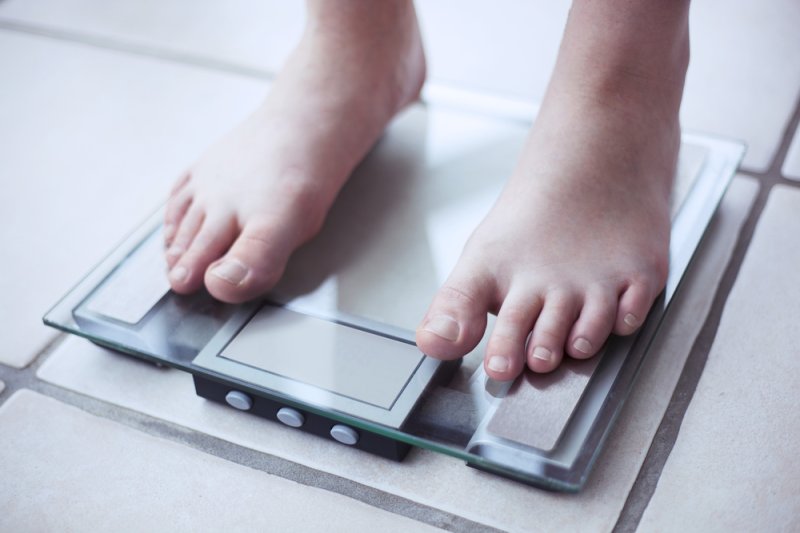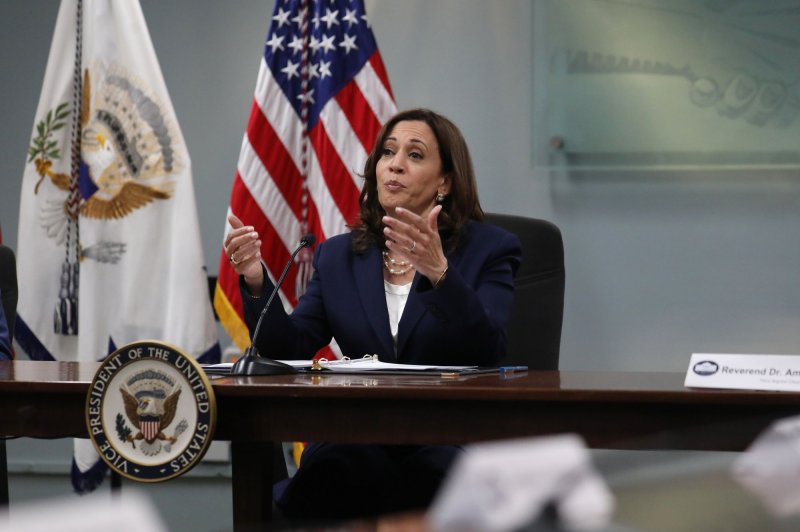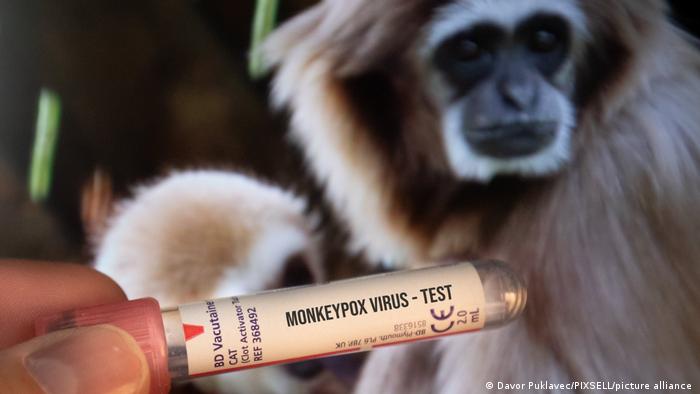Is it just fake news?
Claim: There are social media users who claim that monkeypox doesn't even exist. Photos used in reports that are old or show other diseases such as shingles are used to back up that claim. Numerous image comparisons are circulating, for example on Twitter.
DW Fact Check: False.
Monkeypox is real. The virus has been around since 1958. We've known since 1970 that it can also be transmitted to humans. There are recurrent outbreaks that have so far been limited to countries in West and Central Africa. There's an ongoing outbreak in Nigeria, that started in 2017, with over 500 registered cases.
The "old" images used to prove that reports of monkeypox are a hoax are mostly agency images of the disease that have been in the inventory of their respective providers for years. It is not uncommon for the same images to be used repeatedly for reports on medical issues because the overall selection is rather small.
Some Twitter users are juxtaposing monkeypox and shingles article images to prove that the monkeypox coverage is a fake.
In Australia, the Queensland government's explainer on shingles was indeed illustrated with the image from the tweet. In the case of an article on monkeypox that appeared on healthsite.com the situation is a bit more complicated: Since May 19, 2022, the text does not contain the image from the tweet, but a different one.
An older, archived version of the article from July 17, 2021, on the other hand, incorrectly showed the shingles image as an illustration for monkeypox. This error has since been corrected and the article revised. An editorial error on a website does not change the fact that monkeypox does indeed exist.
Monkeypox due to COVID vaccination?
Claim: AstraZeneca's coronavirus vaccine contains attenuated adenoviruses from chimpanzees as carriers for the DNA of the coronavirus spike protein. For some users, this suggests that monkeypox infections are a result of the vector vaccine.
DW Fact Check: False.
Even though the word "monkey" may suggest a possible connection at first glance, the viruses have nothing to do with each other.
"It's called monkeypox because it was first detected in a monkey colony in 1958. But they actually come from rodents; monkeys are probably an intermediate host," explains Christine Falk, president of the German Society for Immunology.
She says that adenoviruses, including chimpanzee adenoviruses, which are the basis for vector vaccines, are a very different class of viruses than smallpox viruses — with very different characteristics.
According to Falk, these viruses can cause cold-like infections. "And there are some that have been isolated and modified from chimpanzees for use in vaccines so that our bodies don't have prior immunity, as can be the case with human adenoviruses."Falk and other experts are adamant that COVID-19 vaccines have nothing to do with the monkeypox outbreak.
Monkeypox cases have spread from parts of Africa to Europe, the US and Australia
Did the virus originate in a laboratory in Wuhan?
Claim: The Wuhan Institute of Virology is said to have experimented with monkeypox viruses. To some that's a clear indication for the origin of the current outbreak. It's reminiscent of the "laboratory theory" of the coronavirus, which is now considered unlikely among scientists, but not entirely ruled out.
DW Fact Check: Misleading.
Experiments on PCR testing of monkeypox viruses have taken place in Wuhan. This is undisputed, and a study published by the institute in February 2022 also makes this transparent. However, this study only experimented with a fragment of the virus that had less than one-third of the monkeypox genome. That fragment was perfectly safe, the study says, because any risk of becoming contagious again was eliminated.
"There is no evidence to indicate that monkeypox escaped from a lab. This virus exists in nature among animal reservoirs in several countries in central and western Africa with small human outbreaks reported almost every year," Mark Slifka, an immunologist and professor at the Oregon National Primate Research Center, told DW.
Slifka also says that scientists can distinguish between different strains of the virus by sequencing the genome. This allows scientists to establish whether the virus is related to the West African strain or the Central African strain of monkeypox virus. "To my knowledge, none of the primary cases reported travel to China prior to being diagnosed with monkeypox," Slifka said.
The World Health Organization has also confirmed that all current cases to date have been linked to a strain of monkeypox virus that originated in West Africa. According to a paper published by the European Center for Disease Prevention, the fact that an increasing number of cases are currently occurring in Europe is probably due to so-called spreader events where the virus was passed on between men having sex with men, as monkeypox is transmitted primarily via direct mucosal contact.
Is monkeypox a 'plandemic'?
Claim: The claim that the new outbreak of monkeypox was prepared long in advance is also spreading on social media networks. A simulation game at the Munich Security Conference, which was based on a monkeypox scenario, is supposed to be proof. Others establish a direct link between Bill Gates and the outbreak of monkeypox. He is said to have repeatedly warned of such a scenario.
DW Fact Check: Misleading.
The simulation game used as evidence of an allegedly planned monkeypox pandemic at the Munich Security Conference (MSC) 2021 exists and even includes the scenario of a fictitious monkeypox outbreak in May 2022. The simulation was initiated by the Nuclear Threat Initiative (NTI) as part of the MSC to draw attention to gaps in global pandemic coordination.
Simulation games are used in many contexts to prepare for complex scenarios/security risks and to rehearse or review procedures. The fact that such a scenario now exists shows how realistic it is, but it does not prove causality.
While the scenario is close enough, it does not correspond with reality. For example, the real pathogen is less infectious, and the transmission routes differ from the scenario at the MSC. The NTI clarified this again in a recent statement: "The fictional scenario in our exercise involved a hypothetical engineered strain of monkeypox virus, which was more transmissible and more dangerous than natural strains of the virus, and which spread globally — eventually causing more than three billion cases and 270 million deaths over a period of 18 months."
NTI said that in the current outbreak there was no reason to believe that it "involves an engineered pathogen, as we have not seen any compelling evidence that would support such a hypothesis. We also do not believe that the current outbreak has the potential to spread as rapidly as the fictional, engineered pathogen in our scenario or to cause such a high case fatality rate."
As far as the claims go regarding Bill Gates, the billionaire philanthropist has long been involved in disease prevention with his foundation and has been warning for years about the dangers of bioterrorism and pandemics — including, for example, a smallpox outbreak. The possibility of such an outbreak, or a bioterrorist attack with smallpox viruses, is also being discussed in various research articles. Gates never specifically mentioned monkeypox itself in his statements.
Ines Eisele contributed to this story.
This article was originally published in German.











